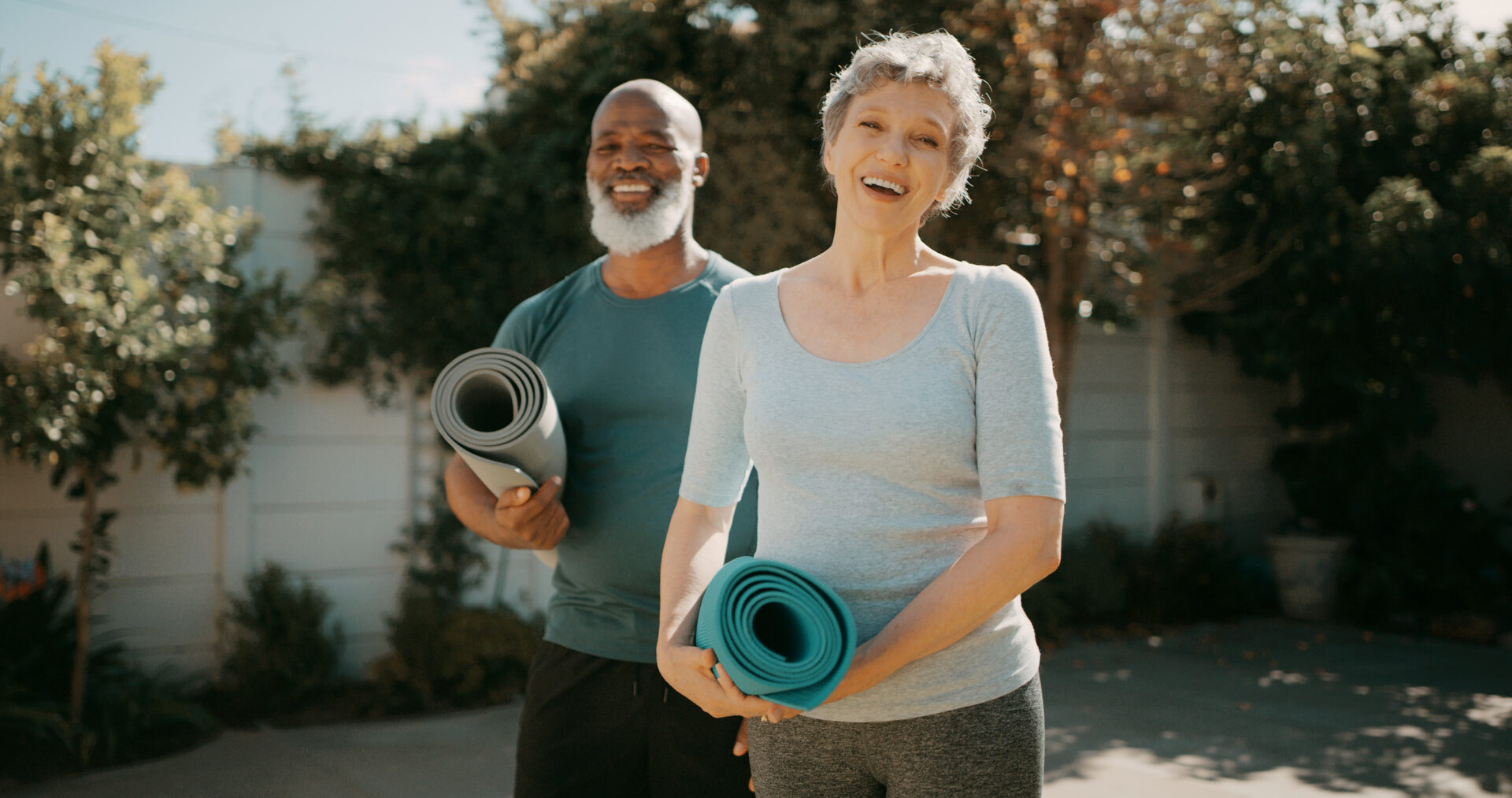As our loved ones age, it's not uncommon for their activity levels to decline. However, maintaining physical activity for seniors is crucial for both physical and mental health. It can help prevent disease, improve mood, maintain physical strength, and enhance independence. Despite the misconceptions that it might be too late to start or that the risk of injury is too high, research consistently shows the benefits of physical activity at any age.
This article provides a deep dive into the following topics:
- The Benefits of Physical Activities for Seniors
- Misconceptions about Physical Activity in Older Adults
- Special Considerations for Physical Activity in Seniors
- 6 Suitable Physical Activities for Seniors with Limited Mobility and Chronic Diseases
The Benefits of Physical Activities for Seniors
Physical changes and participating in regular physical activities can significantly enhance seniors' health and well-being. For instance:
- Preventing diseases: Regular exercise can help prevent or manage several health problems common in older adults, including heart disease, diabetes, certain cancers, and osteoporosis. It can also improve immune function, which is critical for fighting off illnesses and infections.
- Improving mental health: Physical activity is beneficial for mental health, helping to reduce symptoms of depression and anxiety. It also contributes to better cognitive function, improving memory and attention, and may even delay the onset of dementia.
- Maintaining physical strength and independence: Exercise, particularly strength training, can combat the loss of muscle mass and strength associated with aging, helping seniors maintain their physical capabilities and independence.
Misconceptions about Physical Activity in Older Adults
Physical activity can be beneficial and is certainly possible at any age, even for those who haven't been active in their younger years. However, there are often misconceptions and myths associated with seniors and physical activity, which can deter them from embracing an active lifestyle.
Understanding these misconceptions, debunking them, and learning how physical activity can be beneficial and safe at any age is essential. By doing so, we can support the older adults in our lives to adopt healthier habits, ultimately improving their well-being and longevity.
- It's too late to start: One common misconception is that if an older adult hasn't been regularly active throughout their life, it's too late to start. The truth is, it's never too late to begin a physical activity regimen. Even modest amounts of physical activity can yield substantial health benefits, regardless of when one starts. Research has shown that older adults who start regular physical activity, even in their 70s or 80s, experience multiple health benefits.
- The risk of injury is too high: While it's true that seniors have a higher risk of certain injuries, such as fractures from falls, this should not deter them from exercising. In fact, regular physical activity can help reduce the risk of falls by improving strength, balance, and coordination. The key is to ensure the activities are suitable for their current fitness level and health status, and that they follow appropriate safety measures.
- Exercise will make arthritis worse: Physical activity can actually help improve symptoms of arthritis, including pain and stiffness. It can increase strength and flexibility, reduce joint pain, and combat fatigue. Again, the activities should be low-impact and suitable for the individual's condition, and they may benefit from consulting with a healthcare provider or physical therapist.
Special Considerations for Physical Activity in Seniors
Physical activity can significantly improve seniors' health, well-being, and quality of life. However, special considerations are needed to ensure these activities are suitable, safe, and effective.
A. The Importance of Starting Slow and Gradual Progression
For seniors embarking on a new physical activity regimen, it's vital to start slow and gradually progress. The body needs time to adapt to new levels of activity, especially if the person hasn't been very active previously. Beginning with lighter activities such as gentle walks or basic stretching exercises, and then progressively increasing the intensity and duration of workouts over time can help prevent injury and ensure a more sustainable exercise routine.
B. Recognizing and Respecting Personal Limits
Every individual has unique physical capabilities and limitations, and these must be recognized and respected. Encourage seniors to listen to their bodies and adjust their activities as needed. If they experience pain, extreme fatigue, or any other concerning symptoms during or after exercise, they should reduce the intensity of their workouts or take a break. It's important to remember that physical activity should enhance their well-being, not cause additional health problems.
C. The Role of Healthcare Professionals in Advising on Exercise Regimes
Healthcare professionals play an essential role in advising seniors on suitable exercise regimens. They can provide personalized advice based on the individual's overall health status, existing medical conditions, and fitness level. For example, a person with arthritis might benefit from low-impact activities like swimming or cycling, while someone with balance issues might benefit from tai chi or yoga. Healthcare professionals can also provide advice on safely increasing activity levels and monitor progress and health outcomes over time.
D. The Necessity of Regular Medical Check-ups
Regular medical check-ups are crucial for seniors engaging in physical activity. These check-ups can help monitor their overall health, track the impact of their physical activity, and catch any potential health issues early. They provide an opportunity to adjust their exercise regimen if necessary, ensuring it remains suitable and beneficial for their current health status.
Suitable Physical Activities for Seniors with Limited Mobility and Chronic Diseases
Physical activity is beneficial for everyone, including seniors with limited mobility or chronic diseases. It's all about finding suitable activities that cater to their abilities while still providing health benefits. Here are some activities specifically suitable for these individuals:
A. Chair Exercises
Chair exercises can be excellent for individuals with limited mobility. These can range from simple leg lifts and arm raises to more complex routines that incorporate resistance bands or light weights. Chair yoga and chair aerobics are other options that can increase flexibility, muscle tone, and cardiovascular health.
B. Stretching and Flexibility Exercises
Regular stretching can improve flexibility, reduce stiffness, and help prevent injuries. It can be done either standing or sitting and can be tailored to an individual's ability level.
C. Tai Chi
Tai Chi is a form of Chinese martial arts that involves slow, controlled movements and deep breathing. It's low-impact, gentle on the joints, and can improve balance, flexibility, and strength. Many studies have found it beneficial for people with various chronic conditions, including arthritis and heart disease.
D. Water Aerobics
Water aerobics is a low-impact activity that can provide both resistance (for muscle strengthening) and cardiovascular training. The buoyancy of the water supports the body's weight, reducing stress on the joints, which can be beneficial for those with arthritis or similar conditions.
E. Physical Therapy
For those with chronic diseases or severe mobility restrictions, physical therapy might be an appropriate choice. A physical therapist can design a personalized exercise program that considers the individual's health conditions and goals.
F. Gentle Yoga
Gentle or restorative yoga classes can be excellent for those with chronic conditions or limited mobility. These classes often use props like blocks and bolsters to support different poses and are focused on relaxation and gentle stretching.
Physical activities for seniors are key to maintaining the health and well-being of seniors. It helps manage health conditions, improve mental well-being, and maintain independence. Despite common misconceptions, it's never too late for seniors to start engaging in regular exercise, and with careful planning, the risk of injury can be mitigated.
Starting slowly, respecting personal limits, seeking professional advice, and having regular check-ups are vital. For seniors with limited mobility or chronic diseases, a variety of activities, such as chair exercises, Tai Chi, water aerobics, and gentle yoga, can be suitable.
In conclusion, physical activity can significantly improve seniors' health, happiness, and longevity. Therefore, let's support our seniors in adopting an active lifestyle suitable for their abilities and preferences.





